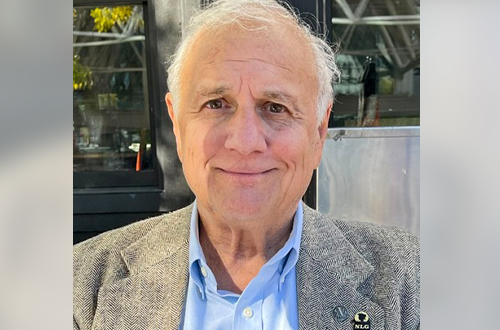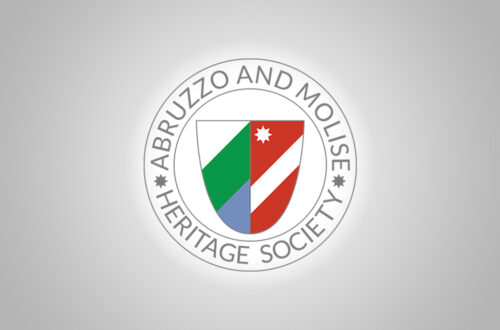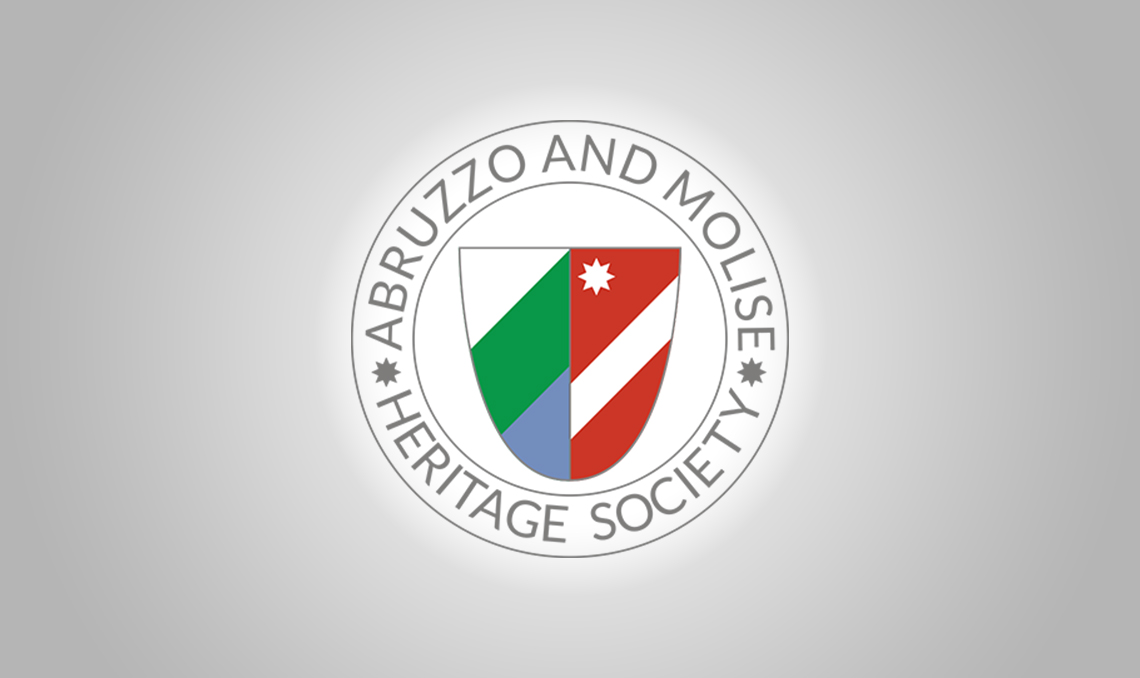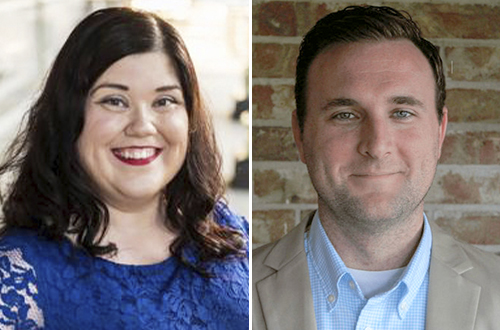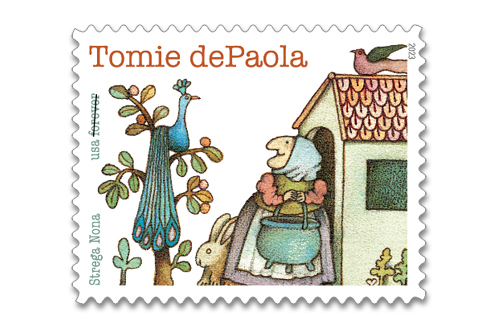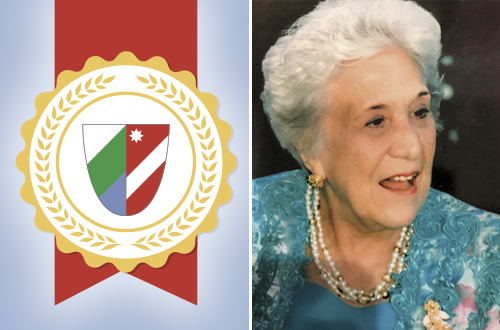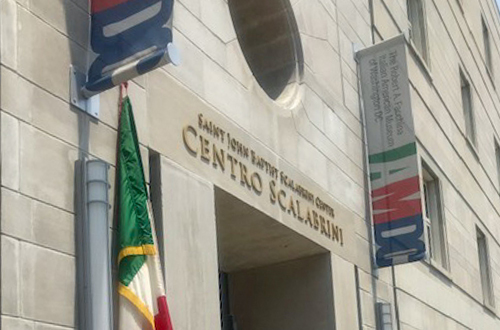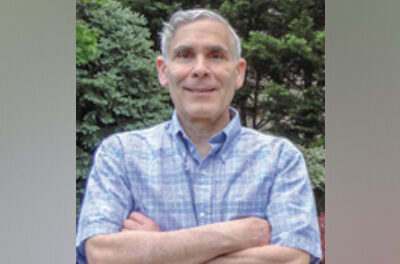-
“Show Me the Money”
Topic of Virtual Talk
By Nancy DeSanti, 1st Vice President-Programs
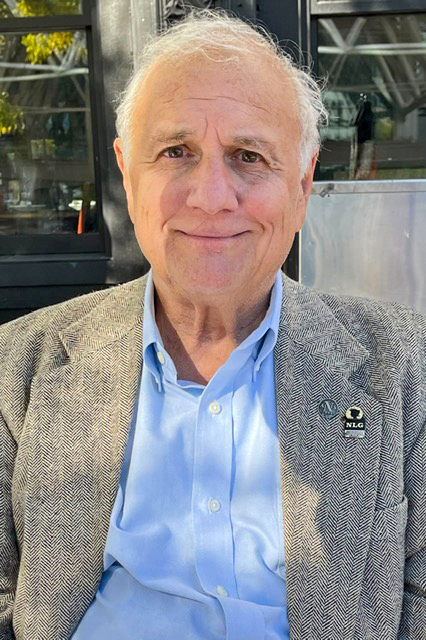
Michael Markowitz On Sunday, July 30, 2023, at 7:30 p.m., Michael Markowitz will give a talk entitled “Show Me the Money!” about the evolution of Roman coinage from lumps of metal from about 300 B.C. to gold imperial coins in 476 A.D.
Michael was born in New York City with Italian roots on his maternal side. His mother’s family name was Genga while his father’s ancestors emigrated from Romania. He attended the University of Rochester and the University of California, Irvine. He worked for many years in the aerospace industry in southern California and then moved to northern Virginia in 1991 where he is a senior research specialist for the Center for Naval Analyses.
Michael is a contributing writer on ancient and medieval coins for CoinWeek.com. He is a member of the American Numismatic Society and the Ancient Numismatic Society of Washington, D.C. Additionally, he serves on the board of directors of the Fairfax Coin Club.
He has said that one of the highlights of his life was spending an afternoon inside the coin vault of the archaeological museum in Siracusa, Sicily. Following Michael’s talk, there will be time for questions and comments. A Zoom link will be available on the AMHS website closer to the date of the event.
July/August 2023
-
Upcoming Summer/Fall AMHS Programs

By Nancy DeSanti, 1st Vice President-Programs
We have planned a variety of programs (“something for everybody”) for the Summer and Fall of 2023. We hope our members and guests will participate in the following upcoming events. Details will be posted on our website shortly before each event.
On Sunday, July 9, at 11:00 a.m., AMHS members are invited to go on a self-guided tour of the exhibition “Going through Hell: The Divine Dante” at the National Gallery of Art, followed by lunch at the Cascade Café.
On Sunday, July 30, at 7:30 p.m., we will listen to a virtual talk called “Show Me the Money,” by Michael Markowitz who will tell us how Roman coinage evolved from lumps of metal to gold imperial coins.
On Sunday, August 13, we will have our annual Ferragosto picnic at Fort Ward Park Area 5 in Alexandria, VA, from 3:00 to 7:00 p.m.
On Sunday, September 10, we will have a luncheon program at 1:30 p.m. in Casa Italiana with a talk by Carmine Vittoria, an author who grew up in a small town near Naples during World War II, survived, and came to the United States where he became a well-known applied quantum physics professor. He was here a few years ago and has since written two more books which he will tell us about.
On Sunday, October 29, in the afternoon at Casa Italiana, we will be treated to a musical program by Italy’s most popular folk group, Ensemble Sangineto, which has been performing Italian folk songs of the 20 regions all over Italy, Europe, and now the United States.
Finally, on Sunday, November 19, we will have our annual wine-tasting event in Casa Italiana at 1:30 p.m.
July/August 2023
-
Legacy and Longevity Featured in AMHS Virtual Programs
By Nancy DeSanti, 1st Vice President-Programs
Two different but perhaps interrelated subjects — legacy and longevity — were the topics of two virtual AMHS talks recently.
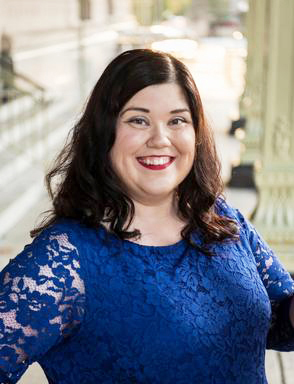
Stephanie Longo
Credit: Courtesy of Stephanie LongoStephanie Longo gave a talk on May 20, 2023, on “Preserving and retelling local culture and traditions,” giving useful tips on researching one’s Italian-American legacy locally.
As an Italian-American historian, she has dedicated her life to celebrating and focusing on her family’s heritage. Born in Scranton, Pa., she holds dual Italian and American citizenship. Her family comes from the towns of Guardia Lombardi, in the province of Avellino in the region of Campania, and Lamezia Terme, in the province of Catanzaro in the region of Calabria.
Stephanie is well-known as an expert on the Italian-American history of northeastern Pennsylvania and has authored several works on the subject, including Italians of Northeastern Pennsylvania, Italians of Lackawanna County, andDunmore. She currently lives in Dunmore, Pa.
Her interest in her own family’s roots is longstanding, perhaps because the traditions have been a part of her life since childhood. She recalled dancing the tarantella at a local Italian festival when she was about five years old and poring over a map of Italy with her mother in a restaurant when she was about six. She never knew her grandfather but was inspired by him to research her family roots. Stephanie told us the story of how, at a book signing for one of her works, a man told her that he knew her grandfather, and he proceeded to tell her stories about him that she had never heard.
Stephanie is also currently the associate producer and chief administrative officer of The Italian-American Podcast. The podcast features a wide array of interesting topics, such as a recent one called “AI for IA” about artificial intelligence as it relates to Italian-American genealogy.
During her virtual talk, she listed some good resources such as We the Italians with interviews by journalist Umberto Mucci, and Ovunque Siamo, an online magazine focusing on new Italian- American writers. She gave suggestions on sourcing material, writing, and eventual publication, and advised being as transparent and objective as possible, and double-checking information. Oral history interviews are also important, she said, but cautioned that obtaining a signed release is always a good idea.
Stephanie also gave tips on researching one’s Italian-American legacy locally. Thinking about her advice, I had the idea of finding out the location where Mass was held before the cornerstone of Holy Rosary Church was laid in 1919. I discovered that it was in a townhouse at 83 H Street, N.W., Washington, D.C. The space was rented by Father Nicholas De Carlo in December 1913 and furnished with an organ and chairs donated by parishioners.
In urging everyone to preserve our local culture and traditions, Stephanie concluded by noting that “it’s not about ourselves, it’s about our ancestors and descendants.” Because after all, she said, “A people without knowledge of their history and culture is like a tree without roots.”
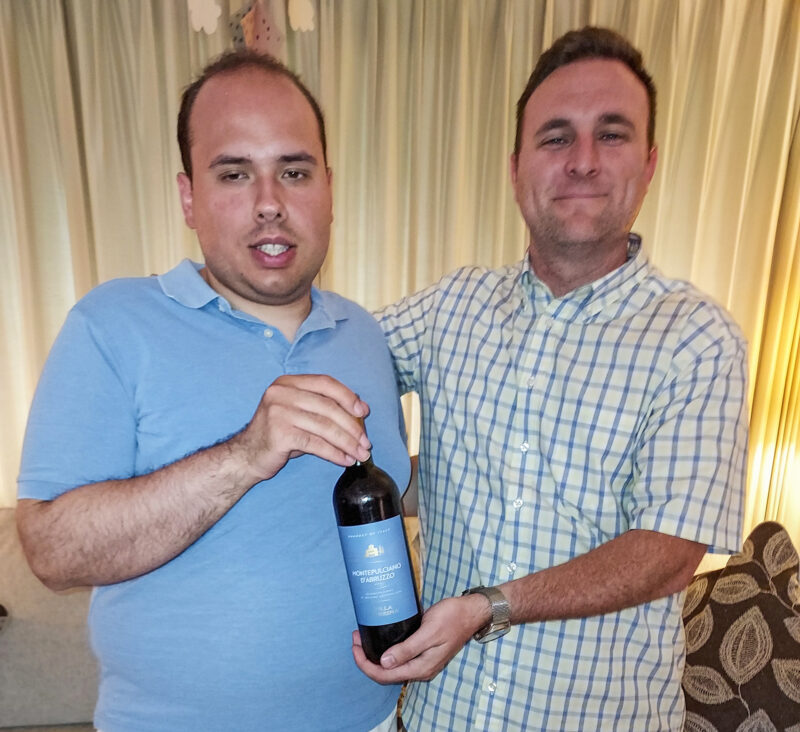
John Michael Howard (right) receives a bottle of Montepulciano D’Abruzzo from AMHS member Joe Scafetta III following Howard’s virtual presentation.
Credit: Joseph “Sonny” Scafetta, Jr.John Michael Howard gave us a virtual talk on June 4, 2023, on “How to live to be 100.” He is a native of Texas with Italian roots on his paternal grandmother’s side of the family from Taranto in Puglia.
With a B.A. in psychology from the University of Dallas in 2016 and an M.S. in clinical counseling from Marymount University in Arlington, Va. In 2021, John currently works as a counselor in Arlington and lives in Northeast Washington, D.C.
During his talk, John told us about a man who was the epitome of longevity — Joe Rollino, a strong man and a lifelong vegetarian who never smoked or drank alcohol, and who lived to be 104. One of 14 children born to Italian immigrant parents in the Coney Island section of Brooklyn, N.Y. in 1905, he was billed as “the world’s strongest man.” At 5’5” and 150 pounds, he could move over a ton with his back and bend coins with his hand. On his 103rd birthday in 2008, Rollino was interviewed by a reporter for a local newspaper and demonstrated that he could still bend a quarter with his teeth (yikes!).
Rollino was also a war hero in the U.S. Army who won three Purple Hearts during World War II and was especially remembered for lifting two wounded soldiers with one arm and two other men with his other arm at a time and carrying them to safety. He worked as a longshoreman until he was 65. Unfortunately, he died when he was hit by a car during his daily five-mile walk in his Brooklyn neighborhood just a few months short of his 105th birthday. Who knows how long he might have lived had it not been for that tragic accident?
John also talked about the book, “Living to be 100,” written by Dr. Michael E. Howard who teaches psychology at Texas State University in San Marcos.
Regarding the book, he discussed terms used in the health science field. He followed up by briefly discussing the world’s five “blue zones” where there is a very high occurrence of centenarians, including in Sardinia. The others are Okinawa, Japan; Loma Linda, California; Nicoya, Costa Rica; and the island of Ikaria in Greece. He noted that among the centenarians in Sardinia, the men outnumber the women by nine to one!
John commented that research shows that the aging process begins at the end of reproductive life, and he also noted that lifestyle counts for more than genes when it comes to longevity. He emphasized the importance of not smoking, avoiding alcohol, or at least drinking in light amounts, following a nutritional diet, like the Mediterranean Diet, exercising regularly, and maintaining a normal weight, noting that aging does not kill most of us. Sleeping from sunset to sunrise and taking naps is good for longevity, too, he said.
Some tips for living a longer and healthier life, he said, are avoiding stress, keeping an optimistic outlook, learning a new language, reading books, staying socially active, and finding your purpose in life, whether it involves religion or something else. That sounds like a good formula for success!
July/August 2023
-
2023 -2024 AMHS Scholarship Winners Announced
By Liz DiGregorio
The AMHS Scholarship Committee has reviewed and selected scholarship recipients for both the AMHS Scholarship and the newly created Angela Lastrico Raish Music Scholarship. The Society has been awarding the AMHS scholarships to deserving young students for over twenty years. Applicants must be exceptionally strong academic performers whose major or minor must be in either the Italian language or Italian studies. This year’s winner is Sofia DeLuca.
As of this year, the AMHS is also managing the new Angela Lastrico Raish scholarship, which is funded entirely by memorial donations in Angela’s honor. The scholarship is offered nationwide to students who are Italian, Italian American, or who have a demonstrated interest in Italy or Italian Studies. The applications were evaluated by both the AMHS Scholarship and the Memorial Fund Scholarship Committees. The Angela Lastrico Raish team was able to award scholarships to five students: two doctoral students, two masters students, and one undergraduate. They are: Lauren Barchi, Javera Chaudhry, Giorgio Consolati, Sonia Fortezza, and Amanda Murro.
Winner of the AMHS Scholarship
Sofia DeLuca
Sofia will be a senior next Fall at George Washington University. She is majoring in Political Science with minors in Italian Language & Literature and Peace Studies. She is from New York and her family has its roots in the regions of Campania and Veneto. Ms. DeLuca’s academic performance has been excellent and she has a deep appreciation for both Italian culture and her ties to Italy.
Winners of the Angela Lastrico Raish Scholarships
(listed alphabetically)
Lauren Barchi
Lauren is a Doctoral Program of Musical Arts student at Rutgers University, majoring in voice performance. She is from New Jersey and her family has roots in the regions of Campania, Basilicata, and Piedmont. She is an accomplished opera performer, singing the role of Mimi in La Bohème this year. She also teaches voice at Rutgers and at Long Island University and is the music director at the Professional Youth Theater.
Javera Chaudhry
Javera will be a senior this Fall at the Mason Gross School of the Arts at Rutgers University, majoring in Music Education with a concentration in voice. She is from New Jersey and her family has roots in the regions of Tuscany and Sicily. Her goal is to become a high school music teacher.
Giorgio Consolati
Giorgio is a Doctoral Program in Music student at the Peabody Institute of Johns Hopkins in Baltimore, majoring in Flute. A native of Milan, Italy, his family has roots in the regions of Lombardy and Campania. He has bachelor’s and master’s degrees in music from Juilliard. He performs extensively in the USA, shares his Italian heritage with his audiences, and hopes to be an orchestral musician and teach music students.
Sonia Fortezza
Sonia is a first-year master’s student at Montclair State University in New Jersey. She is majoring in vocal performance with a focus on Italian Bel Canto repertoire. She is from New York City and her family has roots in the regions of Sicily and Puglia. Her focus on Italian Bel Canto connects her to her Italian heritage, especially to her Nonna and Nonno.
Amanda Murro
Amanda is a graduate student at Montclair State University in New Jersey. She is majoring in music education and saxophone with a jazz focus. She is already teaching music and band to elementary school students. She is from New York and her family has its roots in the regions of Sicily and Campania. Her passion for music, especially the alto saxophone, was sparked at an early age by her nonno Salvatore who emigrated from Sicily and played tenor sax to help support his family in the United States.
The next edition of IL Notizario will feature letters of appreciation from all of the scholarship winners, as well as their photos and links to their performance videos.
July/August 2023
-
Casa Italiana’s New Building Named After “Father of Migrants,” New Initiative Announced
By Nancy DeSanti
In an impressive ceremony held on Sunday, June 11, 2023, the new Casa Italiana building housing the Holy Rosary rectory and the Italian-American Museum of Washington, D.C., was named Centro Scalabrini in honor of San Giovanni Battista Scalabrini, known as the “Father of Migrants.”
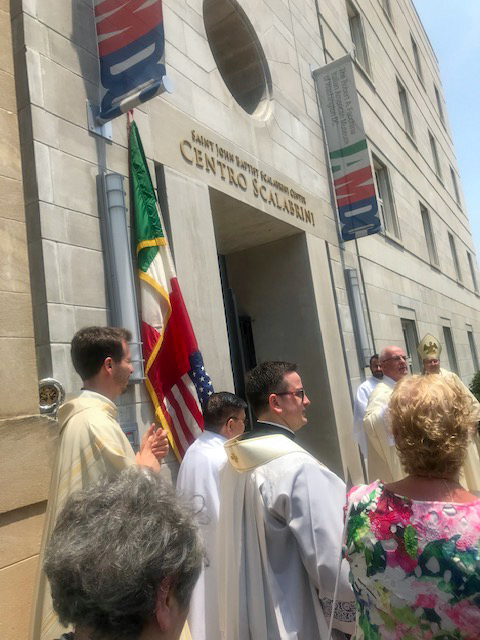
The new building in the Casa Italiana complex was officially named for San Giovanni Battista Scalabrini at a June 11 ceremony.
Credit: Nancy DeSantiThe naming ceremony, held in front of the museum entrance at 229 F Street, N.W., was attended by Apostolic Nuncio Christophe Pierre, six priests of the Scalabrinian order including Holy Rosary Pastor Sergio Dall’Agnese, Father Diego Puricelli, Father Andrei Zanon, and representatives of the Embassy of Italy, along with many parishioners.
Afterwards, a luncheon was held in the newly renovated Casa Italiana. Many AMHS members attended. The new Scalabrini Outreach of D.C. initiative was announced, and among those organizing the initiative are AMHS members Maria Marigliano and Lourdes Tinajero. The goal of the initiative is to coordinate with other parishes and organizations in the region, and increase assistance to migrants in our area. With the inspiration of Pope Francis’ words, they will emphasize four verbs: welcome, promote, protect, and integrate.
The inspiring keynote address was given by AMHS member Francesco Isgrò, the president of the Casa Italiana Sociocultural Center. Excerpts of his remarks follow:
“Three years ago, our community celebrated an historic day, when we opened our Italian-American Museum that tells the stories, memories of our Italian immigrant community, and the contributions which they have made to our nation’s capital. Holy Rosary Church was founded for Italian immigrants, and for more than a century has served the Italian and Italian-American community, not only by offering Mass in Italian every Sunday but also by serving as a cultural center for the community, offering Italian language classes, Italian cultural events, and publishing Voce Italiana, a bilingual newspaper.
“Today is equally an historic day because we are blessed to have the privilege to dedicate our new building to Saint John Baptist Scalabrini, the Father of Migrants. The mission and the work that St. Scalabrini carried out in serving migrants who were emigrating from Italy to North and South America are as important today as it was during his lifetime. The United Nations estimates that at least 103 million people around the world have been forced to flee their homes and among them are nearly 32.5 million refugees. These are the migrants who are the most vulnerable and in need of the most protection. They are the ones who risk their lives traveling hundreds of miles, crossing multiple national borders, to find a haven; they are the ones who sail across the Mediterranean Sea in rickety boats to find refuge in a European country.
“I often inform our visitors to the museum that, when St. Scalabrini visited the White House in 1901, during the time of massive Italian immigration to the United States, he reminded President Theodore Roosevelt that immigration should be seen as ‘an extraordinary resource, a great gift for a country.’ That message is equally as important today to be told to our political leaders in Washington as it was in 1901. If St. Scalabrini were here today, he would have given the same advice to the political leaders in Europe, including Italy.
“Our Italian-American Museum shows how Italian immigrants in Washington, although smaller in number than in other cities in the United States, became an ‘extraordinary resource.’ Many of them were parishioners of Holy Rosary Church. They beautified our Nation’s Capital, and they rose to prominence in all fields of endeavors. We became, in the words of St. Scalabrini, ‘a gift to this country.’
“Today, by the dedication of our new church building to St. Scalabrini, a building that is located just blocks away from the U.S. Congress and the White House, it will become a constant reminder that the work that St. Scalabrini started is unfinished, that human migration will continue, and that our political leaders in Washington and across state houses, should not use migrants as a political football.
“We, as Italian Americans who made this country successful, and at the same time became successful, must not blind ourselves into thinking that the new migrants are different from our parents, grandparents, and great grandparents who crossed the Atlantic Ocean.
“They too seek a better future for their children and families, they too are people of faith, the majority being Catholics, they too bring their own traditions and cultures, and they too will help build a better, more inclusive America.”
Since June 2023 was proclaimed National Immigrant Heritage Month, it was fitting that AMHS member Maria Marigliano provided the following announcement:
“We are pleased to announce the formation of Scalabrini Outreach of D.C., a new ministry at Holy Rosary Church in Washington, D.C. Devoted to improving the lives of migrants and refugees in the greater Washington, D.C., area, Scalabrini Outreach of D.C. is committed to following in the footsteps of Saint John Baptist Scalabrini, who founded three institutions tending to migrants: the Congregation of the Missionaries of Saint Charles Borromeo in 1887 for their religious, moral, social, and legal care; the lay people association named the Society of Saint Raphael in 1889; and the Congregation of the Missionary Sisters of Saint Charles in 1895. This spirituality and love for migrants also inspired the Scalabrinian Lay Missionary Women.
“The formation of this new ministry is the culmination of extensive dialogue with the Scalabrinian Superior General, Father Leonir Chiarello; with our former pastors, Father Ezio Marchetto and Father Andrei Zanon; and with current pastor, Father Sergio Dall’Agnese. These discussions also included the Scalabrini International Migration Network, known as SIMN, based in New York City. SIMN was established in 2007 to continue the work of the newly canonized Saint John Baptist Scalabrini and is dedicated to promoting the rights of migrants, refugees, seafarers, people on the move, and displaced people in need. The organization encompasses more than 250 entities operating throughout the world.
“The Holy Rosary Church ministry will join a network of ten other Scalabrini parish pastoral centers in our province already at work assisting migrant and refugee communities throughout the East Coast. With Holy Rosary’s strategic location in the nation’s capital, the new ministry is uniquely positioned to serve as a liaison and resource for the larger Scalabrini network. As a first step, Scalabrini Outreach of D.C. will focus on exploring advocacy opportunities and on building awareness about the Scalabrinian’s extensive humanitarian efforts currently in 35 countries on five continents worldwide. At a more local level, our new ministry will honor the Italian immigrant heritage of Holy Rosary Church by developing programs that respond to the needs of migrants and refugees in our community. We will work hand in hand with other parish organizations whose missions include activities dedicated to caring for the most vulnerable.
“Scalabrini Outreach of D.C. looks forward to building on the rich traditions of service at Holy Rosary Church as we all seek to live out our calling as Catholics and welcome the strangers in our midst. Lastly, we share a few words from Saint John Baptist Scalabrini, who wrote poetically about migration. He said:
‘Emigration is almost always good for humanity because it opens new channels for trade, facilitates the propagation of industry and of scientific discoveries, blends and perfects civilizations, and widens the concept of one’s homeland beyond the borders, making the whole world a homeland.’”
July/August 2023
